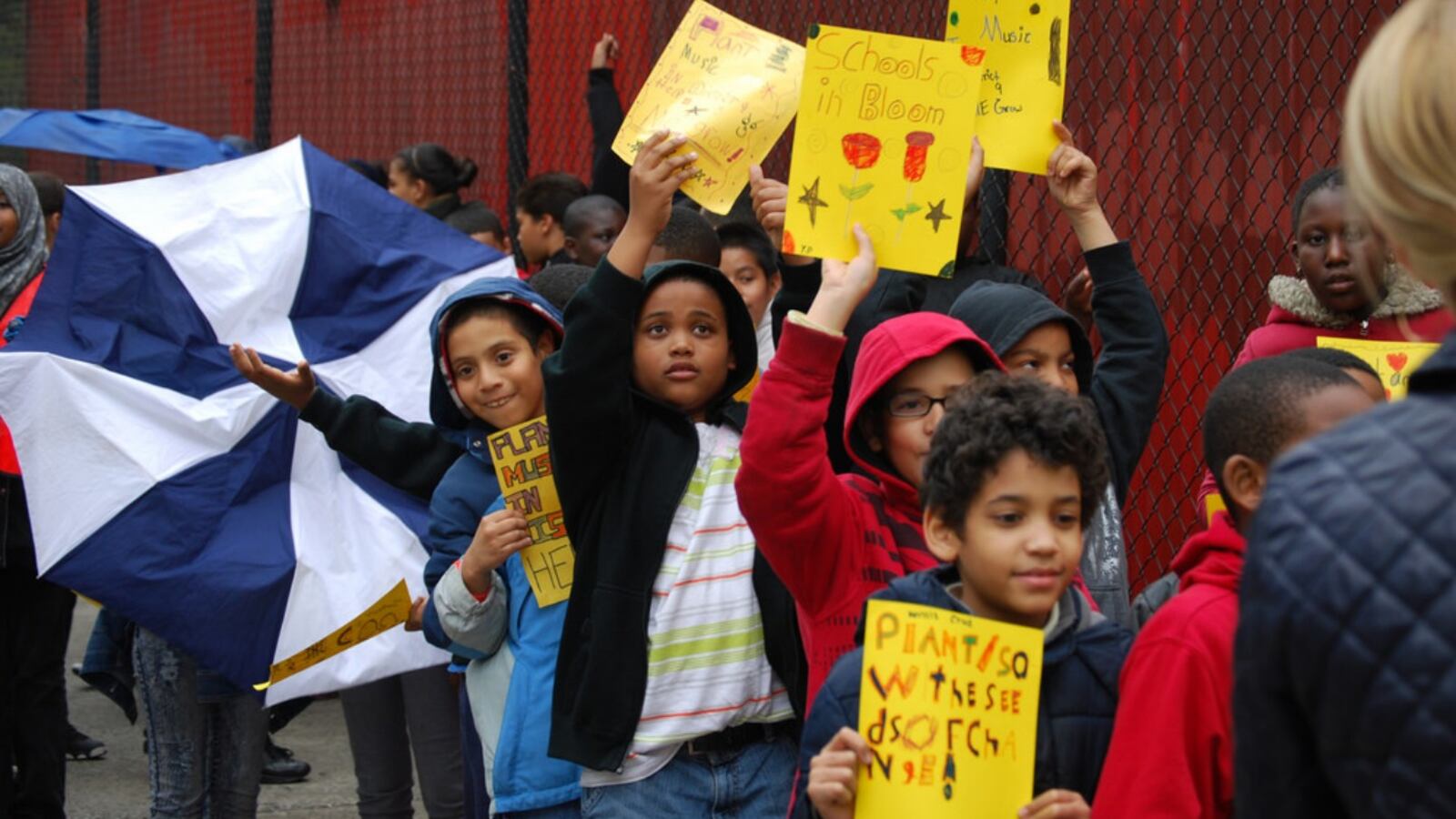Mayor Bill de Blasio’s plan to turn 100 schools into full-service community hubs is among his most ambitious education proposals, and a popular one among advocates and educators. But so far it has seen little action.
Advocates recently called on the city to spend $12.5 million next year to transform 25 schools into such hubs, which could offer medical and social services, art and fitness programs, tutoring and more to students and their families. Instead, the mayor’s $73.9 billion budget directs hundreds of millions dollars to pre-kindergarten, after-school programs, arts education and other school initiatives, but sets aside no funds for community schools.
But in a sign of the goodwill between the new mayor and community-based education groups, which clashed with the Bloomberg administration on most education issues, advocates have not picketed outside City Hall or lobbied lawmakers to resist the mayor’s budget plan. Instead, they are continuing to meet with city officials, drum up local support, and identify potential community schools, all out of faith that the new administration will live up to its word.
“We’re not at a point where we’re concerned,” said Natasha Capers, a parent member of the Coalition for Educational Justice, a consortium of advocacy groups that called for the community schools funding. “I fully feel like this is a priority for them.”
Community schools partner with nonprofits and city agencies to provide an array of services during the school day, in the evenings, and on weekends. Some offer homework help, sports leagues, dance classes, adult education, and free counseling, health, dental, and vision services. Roughly 100 city schools provide such services, coordinated by groups such as the Children’s Aid Society and the United Federation of Teachers.
When he was the city’s public advocate planning to run for mayor, de Blasio accepted the UFT’s invitation to visit a much-heralded community school in Cincinnati. As mayor, he has promised to double the number of community schools in the city by the end of his first term. He tasked Deputy Mayor Richard Buery, who previously headed the Children’s Aid Society, with overseeing the plan.
Buery is also directing the city’s costly and complex expansion of pre-kindergarten and after-school programs, which have devoured much of the administration’s attention to date. But recently he has met with members of CEJ at City Hall to discuss the community school plan, and last week he and the Chancellor Carmen Fariña toured a community school in the Bronx and chatted with parents about the plan.
For their part, CEJ members held a series of outreach events last week in low-income neighborhoods in the Bronx and Brooklyn where they asked parents and school leaders what services could benefit their schools and what local groups might provide them. Parents and students in the New Settlement Parent Action Committee, a CEJ member group in the Bronx, staged a rally to declare their support for community schools.
CEJ also released a report last week calling on the mayor to make good on his promise by rolling out the first batch of community schools this year and by providing $500,000 to each school. Group members said city officials have indicated that they are still in the planning stages and have not committed to a timeline or funding targets.
Marti Adams, a City Hall spokeswoman, said the mayor is committed to developing the schools by 2018 and that “initial conversations are currently underway.”
The city has not created its own community schools before, so the initiative may take more planning than the pre-K or after-school expansions, said Jane Quinn, director of the National Center for Community Schools, which was created by the Children’s Aid Society. She added that city officials are currently engaged in “hardcore planning” around the initiative.
The Children’s Aid Society’s 16 community schools in New York have budgets of between $400,000 and $1.5 million, depending on the size of the school and the services they offer, Quinn said. About two-thirds of the money comes from city, state, and federal funding streams, such as Medicaid or after-school grants, and the rest is obtained from private sources, she said.
Quinn said it is unclear whether there are enough local service providers in the city’s high-needs neighborhoods to support 100 new community schools. But there is no question the city will have to need to devote resources to the plan to get it off the ground, she added.
“I think if the city really wants to adopt this as a preferred reform strategy—and I think they do—it’s definitely going to cost some money,” she said.
Angel Martinez, whose three children attend public schools in the Bronx, said schools desperately need more resources to address students’ many social and emotional needs. She said the previous administration’s strategy of creating new schools did not solve the underlying problem of unmet student needs. De Blasio’s community schools plan has the potential to change that, Martinez said—if he carries it out.
“He did promise 100 community schools,” said Martinez, who is a member of the Parent Action Committee, “and we are holding him accountable to that.”

